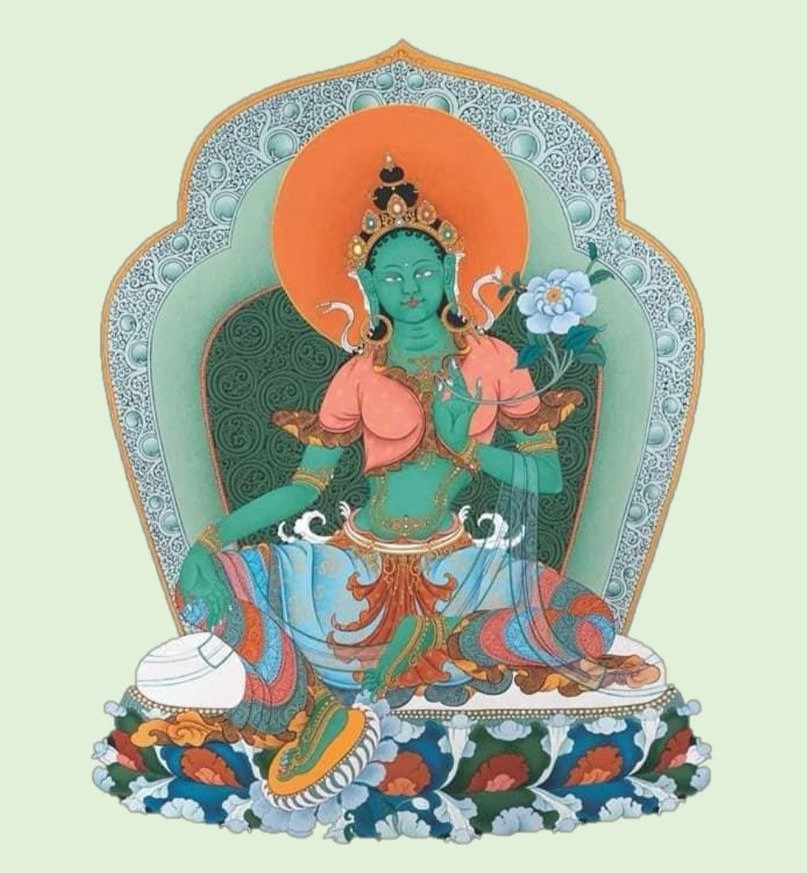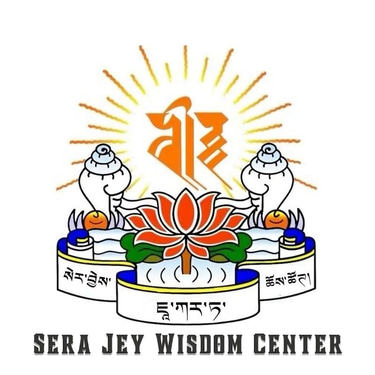Sgrol Ma Cittamani: The Quintessence of Enlightened Feminine Energy in Tibetan Buddhism
Sgrol Ma Cittamani is the highest Tara practice in Tibetan Buddhism, embodying enlightened feminine energy, compassion, and wisdom.
7/27/20255 min read
Among the many deities of the Tibetan Buddhist pantheon, Sgrol Ma Cittamani, more commonly known as Cittamani Tara, holds a place of extraordinary reverence and mysticism. She is considered the most sublime manifestation of the Green Tara, the embodiment of enlightened feminine energy, swift compassion, and protection from fears. As a central figure in Highest Yoga Tantra, Cittamani Tara is not just an object of devotion but also a path of profound spiritual transformation. Her practice is considered both accessible and profoundly advanced, offering a method for achieving enlightenment swiftly, even within a single lifetime.
This 1,500-word article explores the origins, iconography, practice, and profound significance of Cittamani Tara (Sgrol Ma Cittamani), offering an in-depth look at one of the most cherished figures in Vajrayana Buddhism.
Origins and Lineage
The name “Cittamani” means “Wish-Fulfilling Jewel of the Mind.” This title speaks to Tara’s ability to manifest whatever is needed to support a practitioner’s spiritual journey. The lineage of Cittamani Tara is particularly associated with the Gelugpa tradition, the school founded by Je Tsongkhapa, and it holds a central place in the tantric teachings passed down through highly realized masters such as Pabongka Rinpoche, Trijang Rinpoche, and the 14th Dalai Lama.
According to Tibetan legend, Tara arose from the tears of Avalokiteshvara, the Bodhisattva of Compassion, as he wept over the suffering of sentient beings. From these tears emerged two forms: Green Tara, representing active compassion, and White Tara, representing serene compassion and longevity. Cittamani Tara is a specialized tantric form of Green Tara—more esoteric, more direct, and more suited to those practicing the most profound levels of Vajrayana.
The practice was introduced as a Highest Yoga Tantra method, where Tara is no longer external but is realized as inseparable from the practitioner’s own mind. This realization is the key to the practice: to perceive all phenomena as arising from the clear light nature of the mind and to manifest Tara as the wisdom-energy of this ultimate reality.
Iconography and Symbolism
Cittamani Tara appears in a brilliant green hue, symbolic of her active, compassionate energy. She is youthful, radiant, and full of bliss, seated in the lalitasana posture, with her right leg extended—ready to rise and respond to the suffering of beings. Her left leg is drawn in, signifying meditative stillness and wisdom.
In her left hand, held at her heart, is a blue utpala flower (night lotus), symbolizing the perfection of compassion and wisdom. Her right hand rests in the gesture of giving (varada mudra), showing her readiness to bestow blessings, protection, and siddhis (spiritual attainments). Adorned with silks and jewels, her beauty reflects the richness and perfection of enlightened qualities.
What makes Cittamani Tara unique is that she is not only a goddess or bodhisattva to be supplicated but also a yidam—a meditational deity with whom the practitioner becomes fully identified through tantric visualization. Her body, speech, and mind are the purified, divine equivalents of the practitioner’s own. The entire practice aims to realize this non-duality.
The Path of Cittamani Tara: Tantra and Transformation
Cittamani Tara is practiced within the Highest Yoga Tantra framework, which is the most advanced level of Tibetan Buddhist tantric practice. This path requires a solid foundation in Lamrim (the graduated path to enlightenment), Guru Yoga, Renunciation, Bodhicitta, and an understanding of Emptiness (Śūnyatā).
The practice involves two stages:
Generation Stage (Kyerim) – Here, the practitioner visualizes themselves as Cittamani Tara, constructing a detailed mandala of Tara and her celestial environment. This visualization is not mere imagination but a sacred tool to transform perception. Every element in the mandala represents a purified aspect of ordinary reality, helping the practitioner internalize divine qualities and understand the illusory nature of phenomena.
Completion Stage (Dzogrim) – In this more advanced phase, the practitioner works with the subtle energies of the body: winds (lung), channels (tsa), and drops (tiglé). Through yogic techniques such as inner fire (tummo) and clear light meditation, the practitioner realizes the innate mind of clear light, the most subtle level of consciousness, believed to be the actual nature of the mind and the key to enlightenment.
Cittamani Tara’s practice integrates these two stages, leading the practitioner to a direct experience of non-duality—the realization that all appearances, including Tara herself, arise from the pure, luminous nature of the mind.
The Swift Liberator: Compassion in Action
One of the most compelling reasons for the popularity of Cittamani Tara is her reputation for swift action. While many deities embody compassion, Tara is unique in her speed and immediacy. Practitioners believe she responds quickly to prayers, especially in times of danger, illness, fear, or emotional distress.
Her mantra, Om Tare Tuttare Ture Soha, is chanted by millions of Buddhists around the world. Each part of the mantra has deep meaning:
Om – the sacred syllable, representing the enlightened body, speech, and mind.
Tare – liberates from ordinary fears.
Tuttare – liberates from inner fears and obstacles.
Ture – liberates from ignorance and the fear of samsaric suffering.
Soha – affirms the truth of the path and seals the blessing in the heart.
In the Cittamani Tara practice, this mantra is often visualized as revolving at the heart of the deity, radiating light and blessing all sentient beings. It is believed that each recitation plants a seed of enlightenment in the mindstream of the practitioner.
The Importance of Guru and Initiation
Because Cittamani Tara is a Highest Yoga Tantra practice, it requires empowerment (wang) from a qualified Vajrayana master. The empowerment is not symbolic but an actual transmission of the lineage and energy of Tara, linking the practitioner’s mind to the unbroken line of enlightened masters who have realized her nature.
In addition to empowerment, oral transmission (lung) and instructions (tri) are necessary. This ensures that the practitioner understands the practice correctly and can apply it with skill and respect. Attempting such practices without proper guidance is considered not only ineffective but potentially harmful, as one may distort the sacred visualizations or misuse the subtle energies involved.
The guru (spiritual teacher) plays a central role, often visualized as inseparable from Tara herself. Through devotion to the guru and pure view, the practitioner’s mind is opened to the blessings and realizations of the path.
Cittamani Tara in Daily Life
Despite its complexity, the practice of Cittamani Tara can be adapted to daily life. Many lay practitioners recite her mantra daily, make offerings, or meditate on her image for protection, healing, and mental clarity. Even without full completion-stage practice, the presence of Tara in one's life can bring profound benefits.
In times of personal crisis, Tara is called upon as a divine mother, a friend, and a guide. Her energy is especially supportive for those who face fears, anxieties, and trauma. She is seen as removing the "eight great fears"—external threats like fire, water, lions, and thieves, as well as internal fears like attachment, pride, ignorance, and jealousy.
For women, Cittamani Tara represents empowerment, wisdom, and strength. She offers a model of the divine feminine that is not submissive or passive but vibrant, fearless, and wise. In a world where feminine spiritual archetypes are often underrepresented, Tara shines as a beacon of balance and liberation.
Enlightenment in One Lifetime
One of the unique promises of the Cittamani Tara practice is that it can lead to full enlightenment in a single lifetime, or even within three years and three months of intensive retreat. This is not a metaphorical claim, but a serious assertion based on the Vajrayana principle that the same mind which is now deluded is also the very mind that can be awakened.
The key lies in directly accessing the clear light mind and recognizing its identity with the nature of Tara. Through skillful means—visualization, mantra, yogic techniques, and the blessings of the guru—the practitioner removes obscurations and actualizes the state of a Buddha.
Tara’s Radiant Wisdom
Sgrol Ma Cittamani is not only a yidam, not only a bodhisattva, but also a mirror of our own enlightened potential. She is the active expression of compassion, the fearless remover of obstacles, and the divine mother who guides beings to freedom.
Her practice, though profound and requiring careful guidance, is accessible to those with sincere motivation, pure intention, and devotion. She represents the swift path, the joyous path, and the path of wisdom inseparable from compassion.
In a world filled with uncertainty, fear, and fragmentation, the light of Cittamani Tara continues to shine—offering hope, guidance, and the promise of liberation. To connect with her is to connect with the deepest truth of one's own mind: clear, luminous, and boundlessly compassionate.
By meditating on her, reciting her mantra, and receiving her blessings through proper lineage and practice, practitioners can transform their suffering into bliss, their confusion into clarity, and their limitations into the boundless freedom of enlightenment. Tara is always near—swift, radiant, and full of wisdom—for those who call her name with faith and an open heart.


Community
Explore teachings, prayers, and cultural events.
Address
Sera Jey Wisdom Center
Ruko Savoy Blok C1 No.31 & 32,
River Garden Jakarta Garden City,
Cakung Timur, Jakarta Timur 13910,
Indonesia
+62 813 2488 4241
© 2025. All rights reserved.
